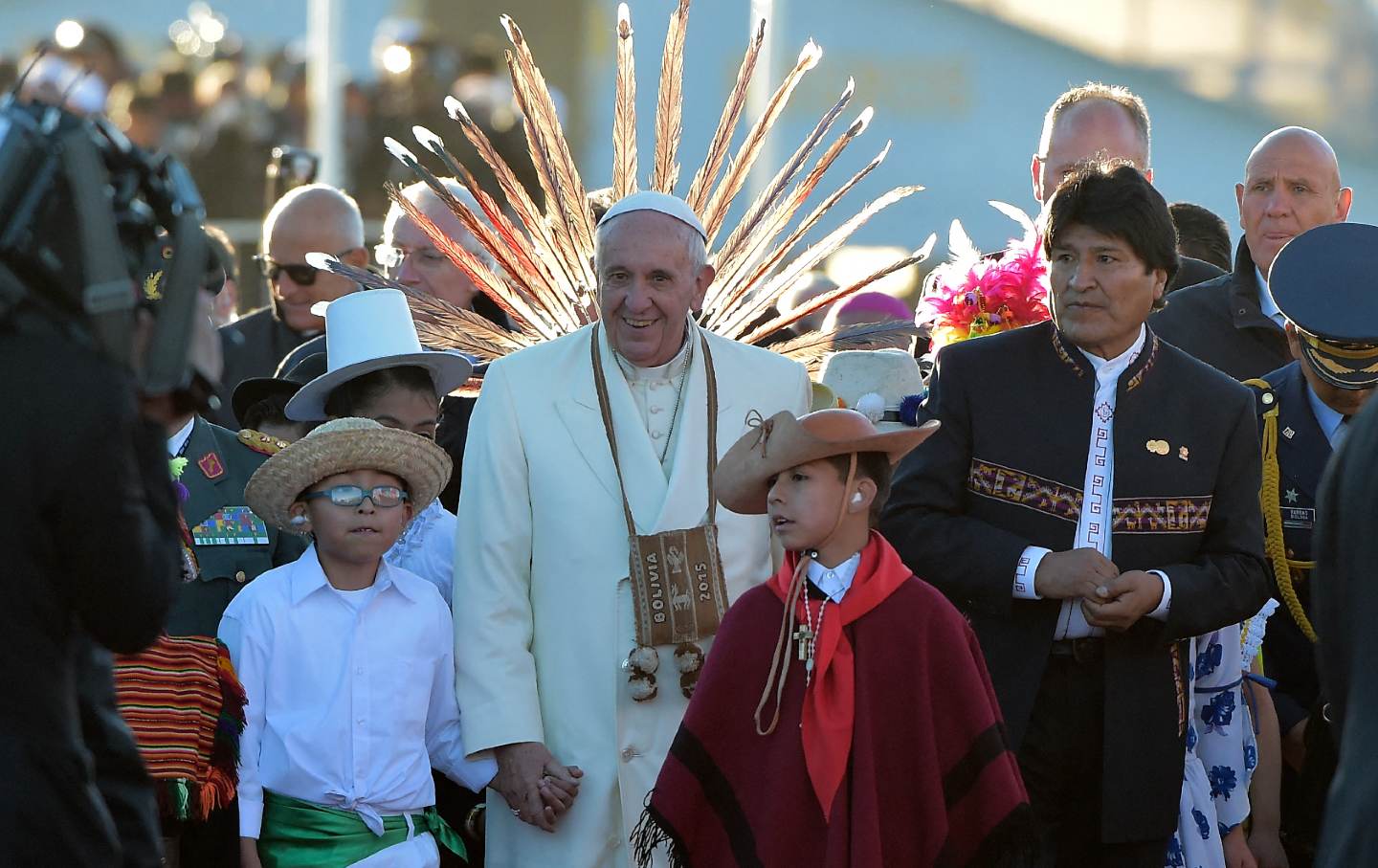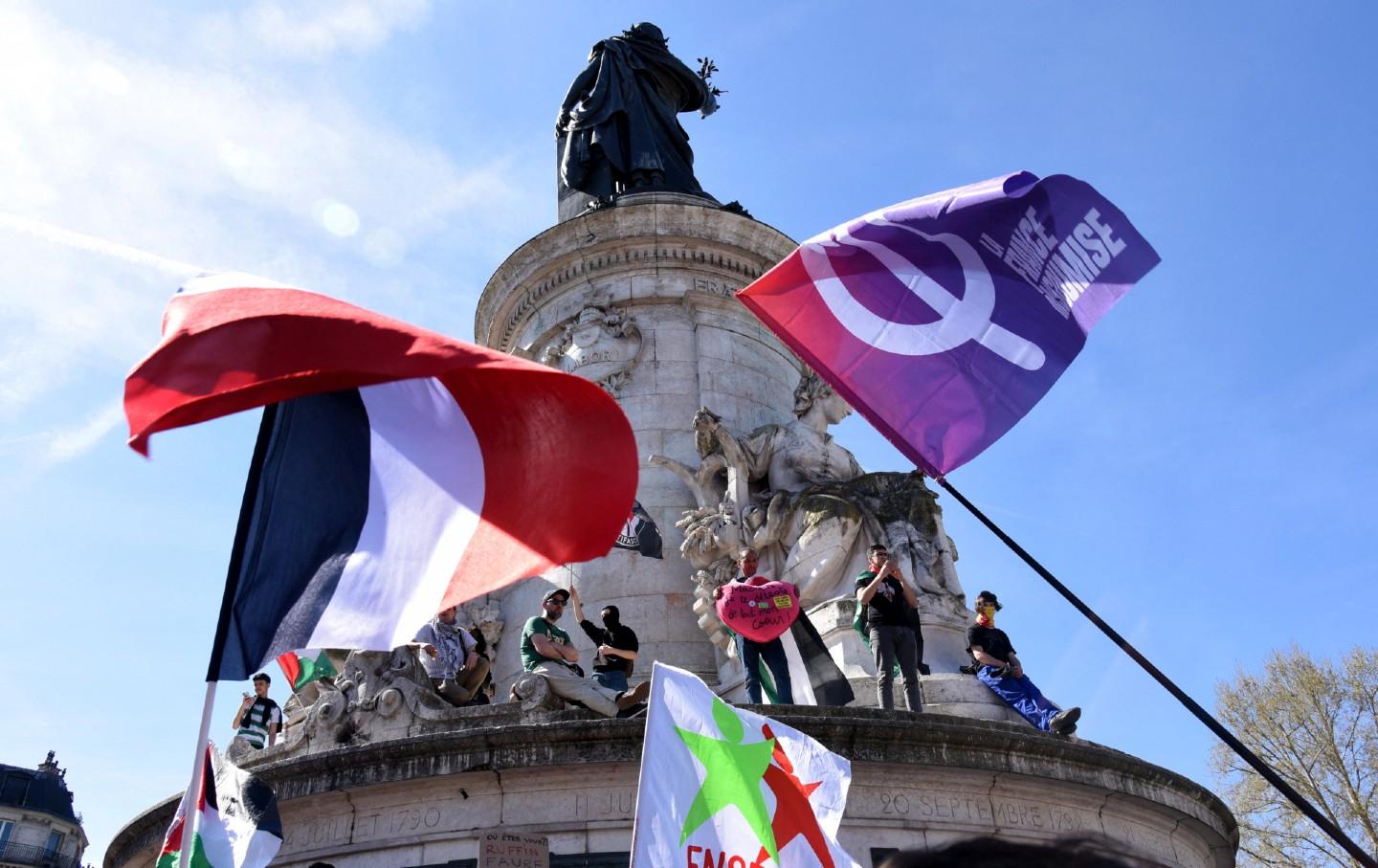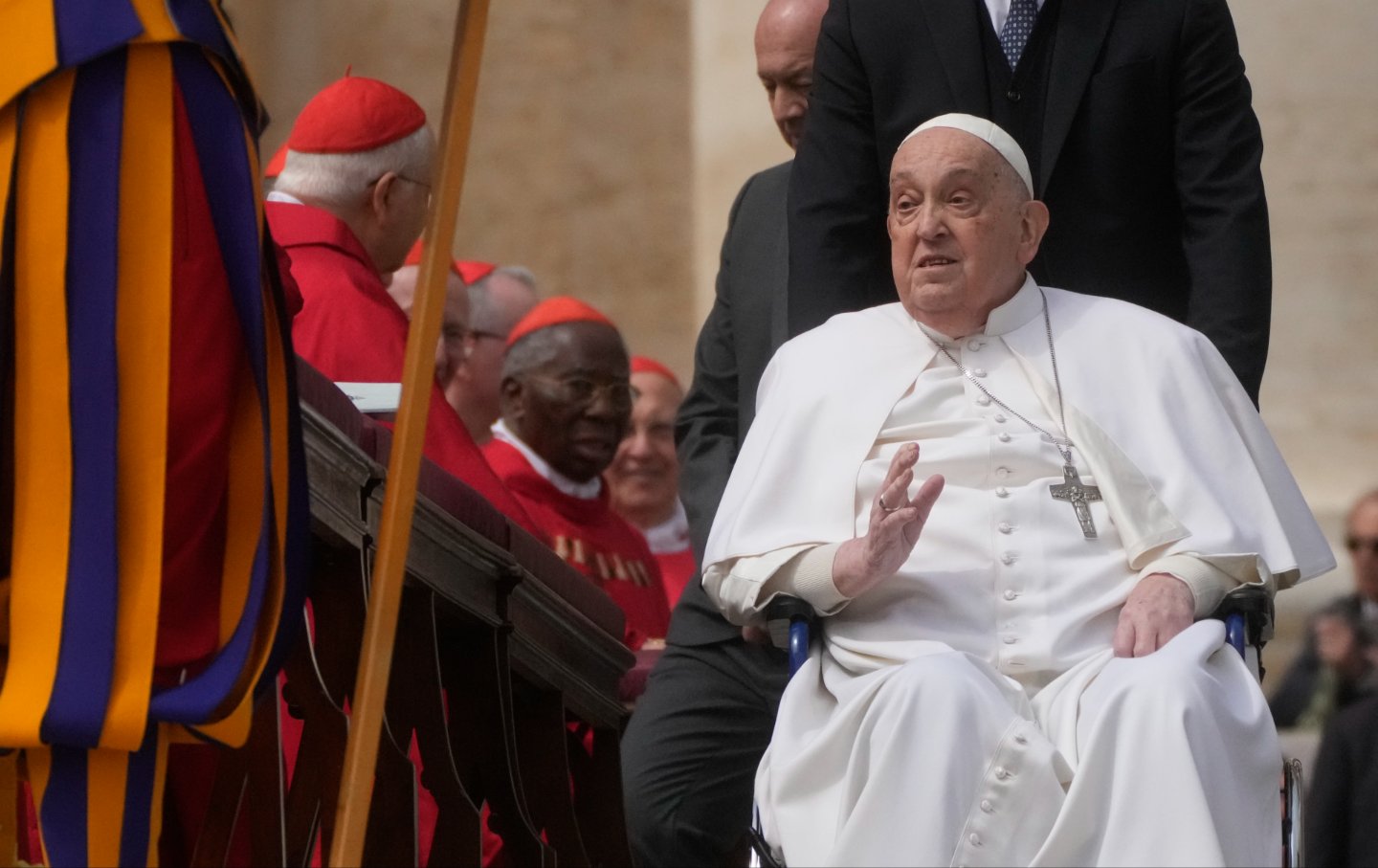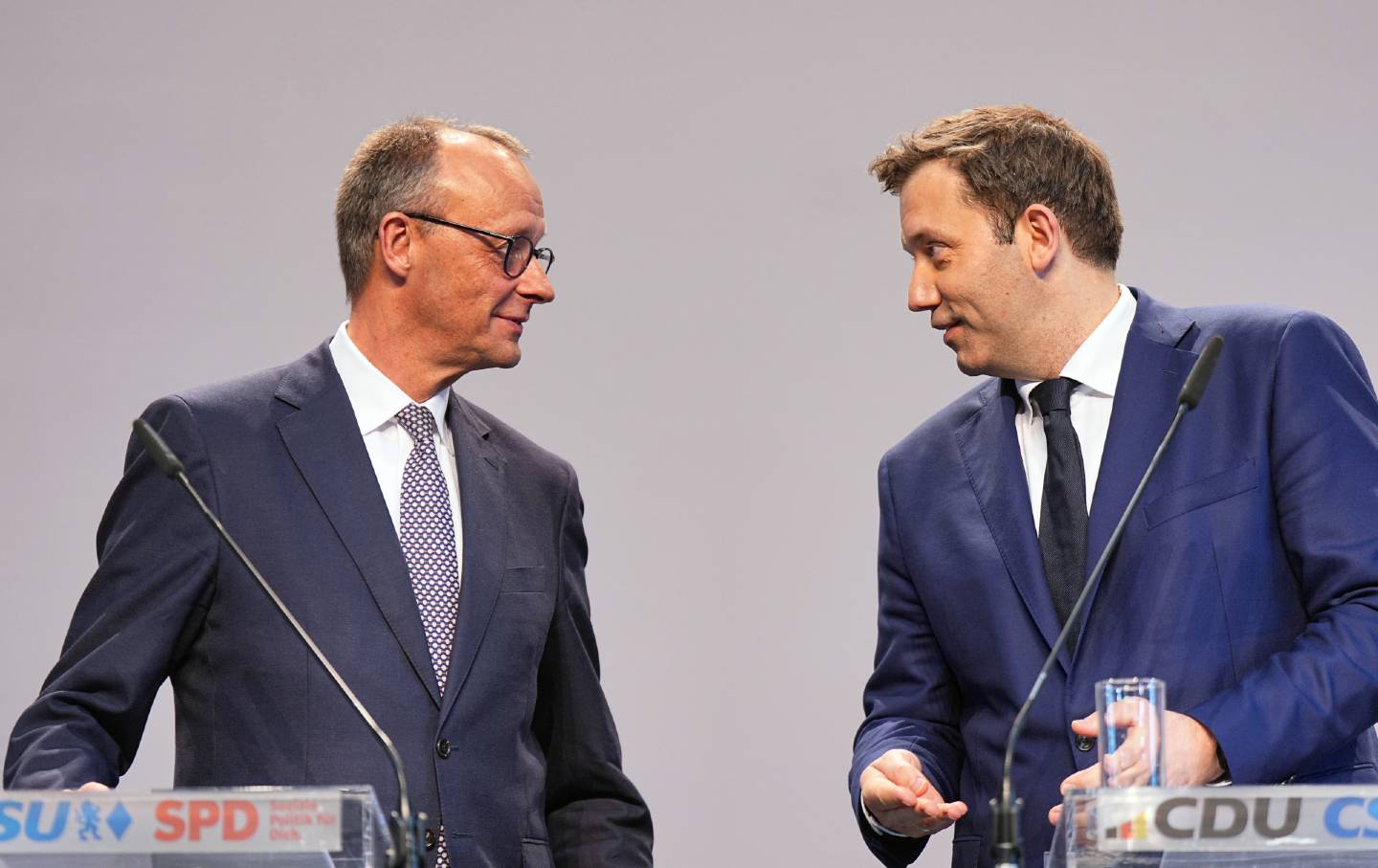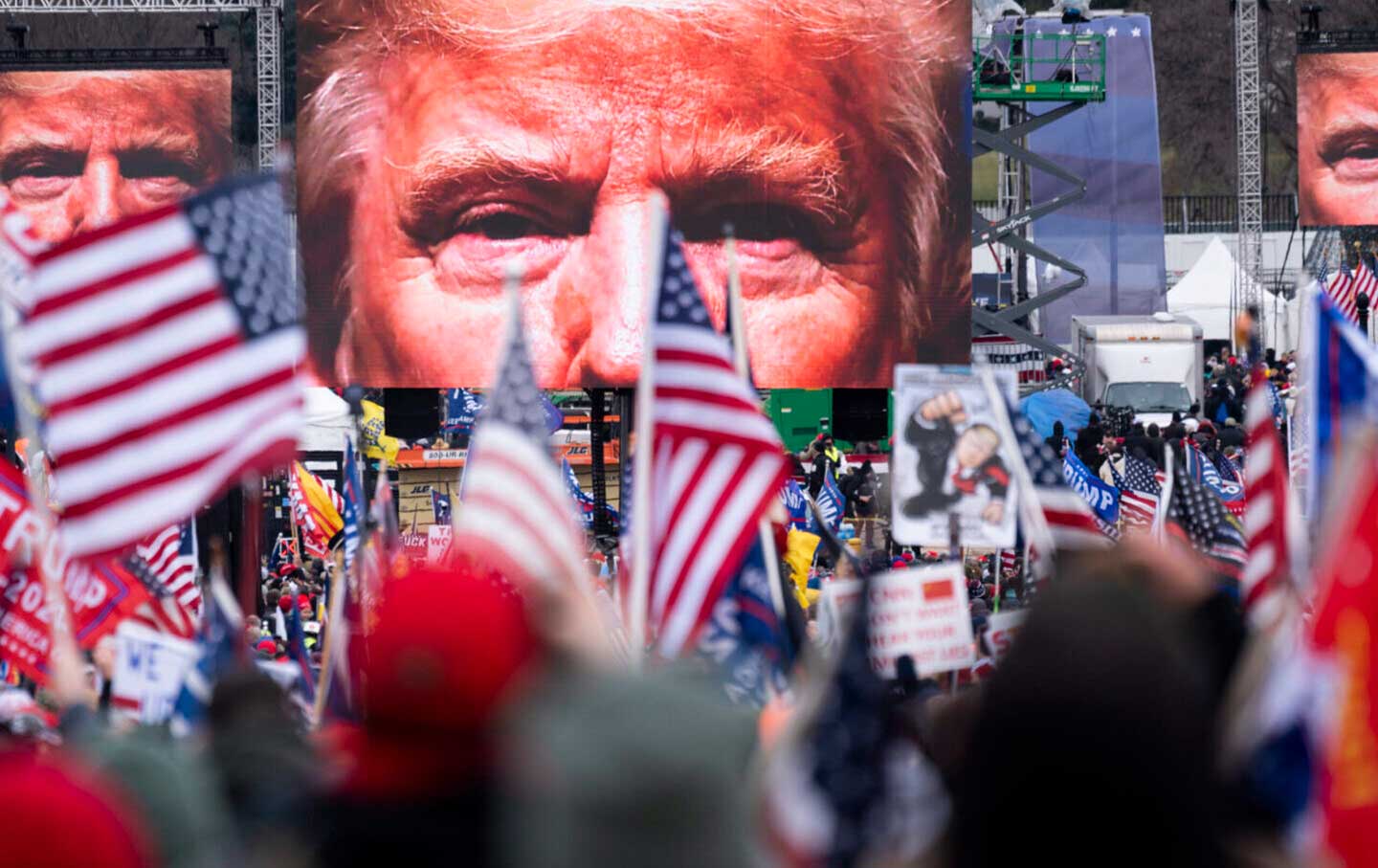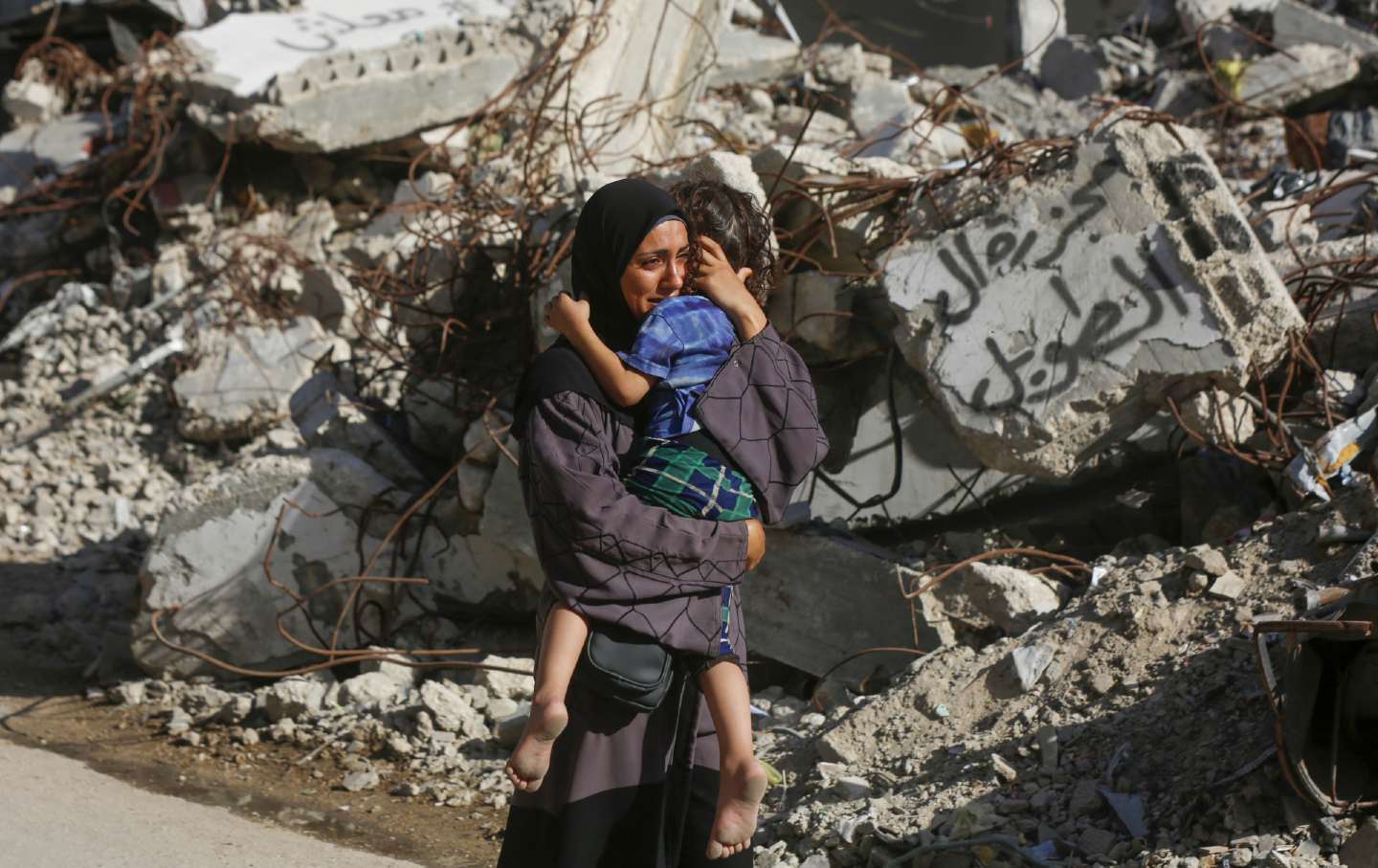The Big Little War You’ve Probably Never Heard Of
The Democratic Republic of the Congo is holding elections. Civil war has displaced millions of the country’s citizens but garnered little attention internationally.
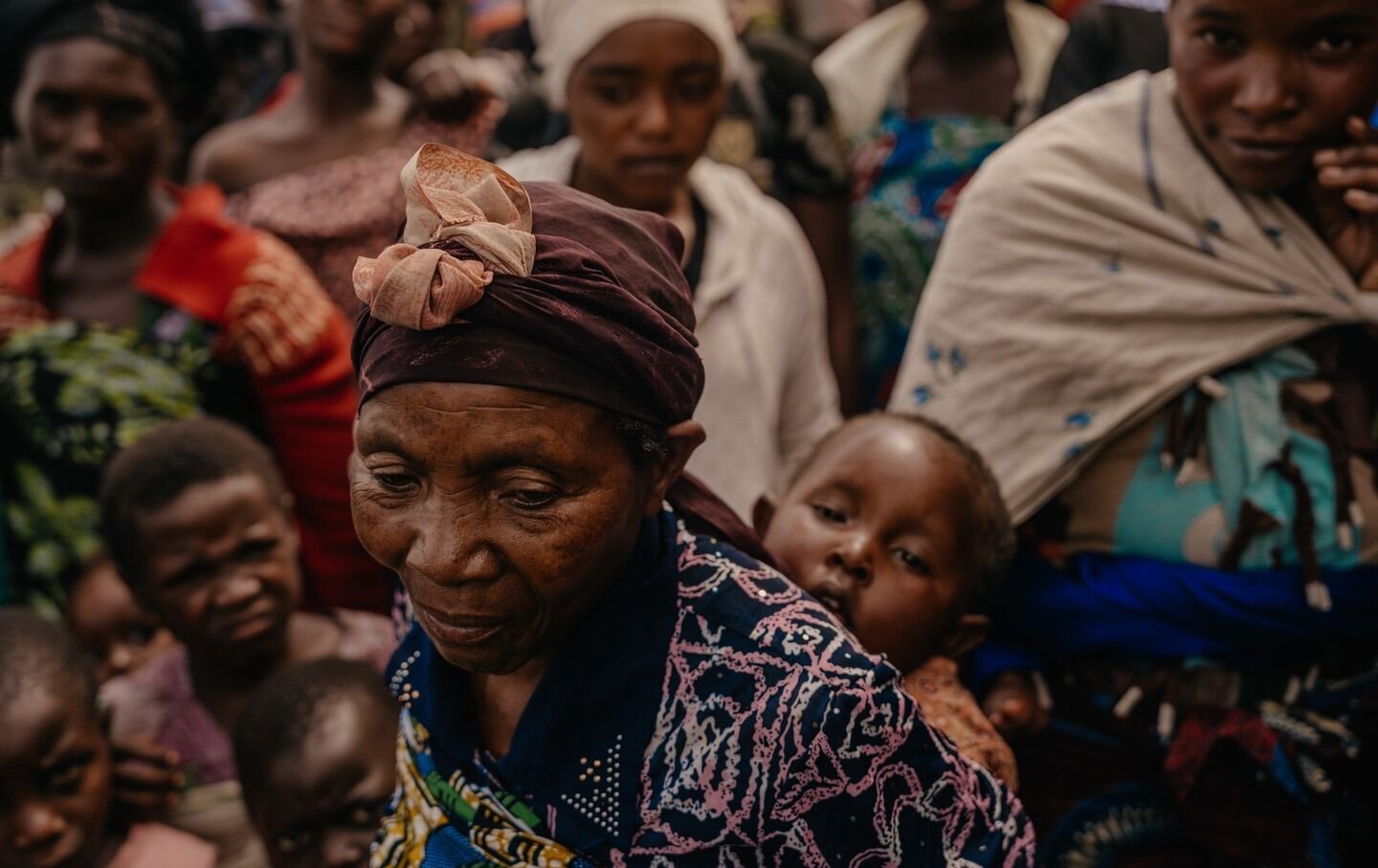
Sake, Democratic Republic of the Congo—Marciane Ndamukunze walked all night to reach the displacement camp with her sleeping granddaughter slung on her back. The sound of artillery echoed down from the hills behind them as they were welcomed glumly by families who had arrived in earlier waves of fighting. The camp stretched into the distance: fragile rows of tents, the bare minimum of shelter that displaced civilians have learned to call home, billowed in the early morning air.
Marciane is one of almost 7 million displaced people in the Democratic Republic of the Congo. According to UNICEF, children are being abducted in record numbers; the recruitment of child-soldiers as young as 5 has spiked; and the country has the world’s highest rate of child rape by armed groups and soldiers.
Congolese voters go to the polls today, December 20, in a highly contentious election. Campaigning has already been marked by violence. Among the electorate’s most pressing concerns are whether and how their next leader will be able finally to end war and chaos in their country.
In recent years under the incumbent, President Félix Antoine Tshisekedi Tshilombo, the turmoil has only increased, and this may be reason enough for the electorate to cast their ballots against him. “Eastern DRC has become one of the most dangerous places in the world for women and children,” Heather Kerr, the International Rescue Committee’s country director said in a statement in November. “Further exacerbating the protection crisis is the lack of food in the displacement camps; women are forced to go outside to find food so they can feed their children, with many reporting that they have been exploited for sex.”
A history of violence
From late 2021, Congolese garrisons guarding remote military positions separating Congo and Rwanda began to be attacked. On these lonely peaks, shadowed by the Virunga mountains, they were overrun and slaughtered.
Troops complained that the assailants were motivated, and well-equipped with the tools of modern war: small drones, body armour and night vision. One soldier claimed that the corpses of his dead comrades had been left in a pile for his unit to find.
The culprits were a group of Congolese rebels belonging to a group called the M23, or March 23. Rwanda has denied helping the M23, but an UN report from this June detailed multiple instances of Rwandan troops assisting the invasion.
The cause for the attacks is rooted in the politics of the African Great Lakes, and poor relations between the presidents of Rwanda and Congo. The Rwandan president, Paul Kagame, accused the Congolese of operating a rear base for terror groups with their roots in the 1994 Rwandan genocide. Tshisekedi, Congo’s president, believed that Rwanda was trying to steal Congo’s valuable natural resources like tin, tungsten and tantalum.
It is from the M23 that Marciane is fleeing, and although the group is far from being the only one to sow chaos in Congo, the war between them and the Congolese army is one of the most destabilising to the country. In May 2022, the conflict burst out of the remote mountains. The M23 successfully conquered huge swathes of territory, leaving the Congolese army reeling, and hundreds of thousands of civilians running for their lives.
The M23 have rebelled before. Their troops are ethnic Tutsi Congolese who feel discriminated against and attacked by non-Tutsis. Their name comes from the date of a failed peace treaty between the Congolese government and the National Congress for the Defence of the People rebel group, which the UN accused of “possible war crimes.” The M23 trace their origin to a 2012 mutiny of former CNDP fighters against the regular Congolese army.
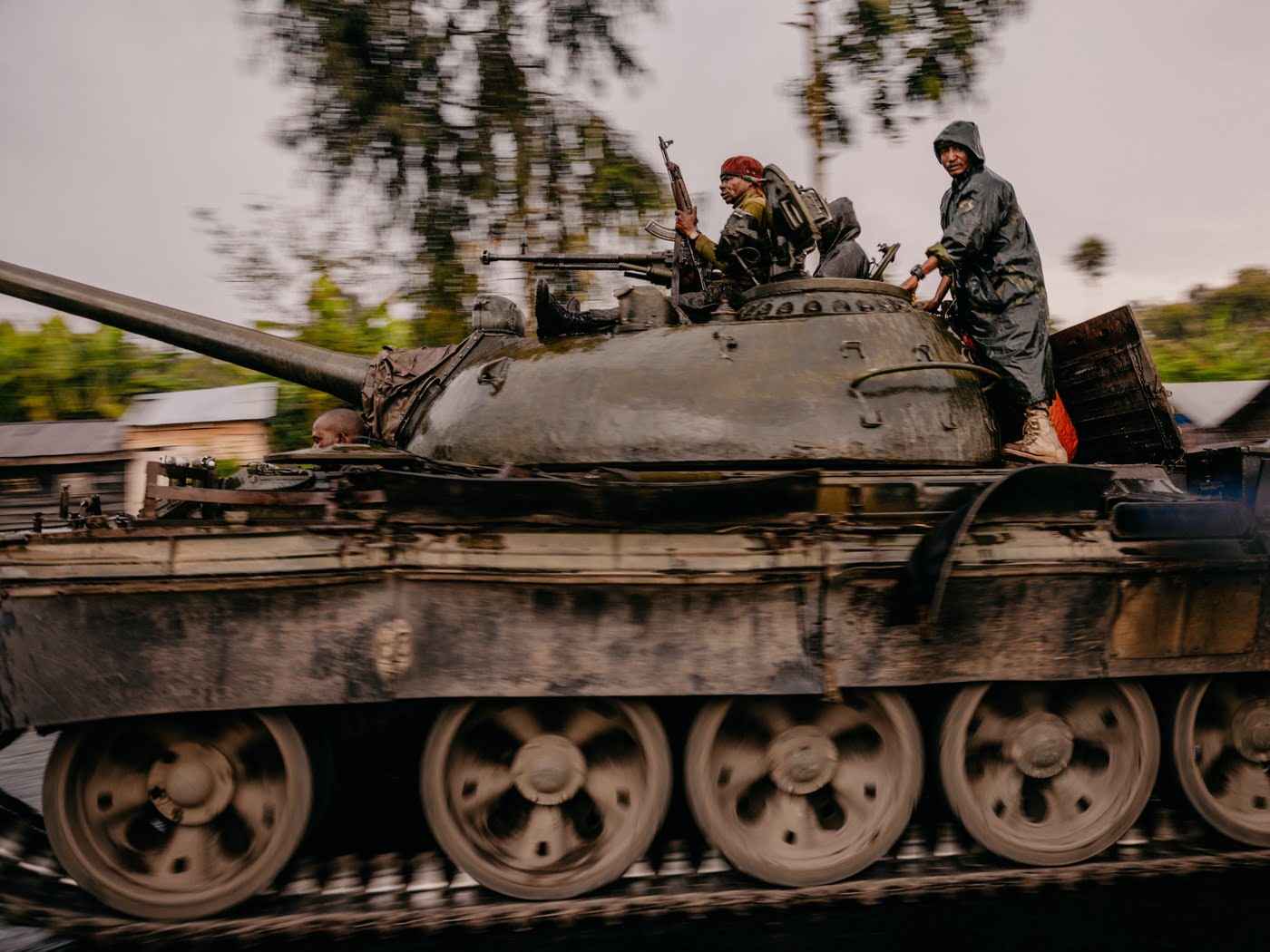
In 2012 and 2013, the M23 fought the Congolese army for 20 months, seizing the city of Goma. According to a Human Rights Watch report at the time, they committed “widespread war crimes, including summary executions, rapes, and forced recruitment.” In November 2013, they laid down their arms, but increasing tensions with Rwanda under Tshisekedi’s rule led to the renewed clashes.
Almost ten years later, this June, Human Rights Watch released an eerily similar report to the one from 2013, accusing the group of the same crimes. “The M23’s unrelenting killings and rapes are bolstered by the military support Rwandan commanders provide the rebel armed group,” Clémentine de Montjoye, an Africa researcher at the group, said in the report.
On December 3, an East African peace force withdrew after Tshisekedi said that it had been ineffective at containing the violence. The president has also critiqued the United Nations Organization Stabilization Mission in the Democratic Republic of the Congo, known as MONUSCO, a longstanding and broadly disliked peacekeeping force based in the country, because it has not brought its fighting force to bear on rebels like the M23.
Joseph Mulala Nguromo, a nonresident fellow at the Atlantic Council, says that the conflict could even spread into outright war between Rwanda and Congo. “Félix [Tshisekedi] is saying East African Community out. Fine. He’s saying MONUSCO out. Fine. But how do you solve the persisting problem between Congo and Rwanda?,” he asked. “We are in a very delicate situation where without a mediator the probability of Rwanda and Congo really fighting is just increasing.”
Popular
“swipe left below to view more authors”Swipe →Arming Militias
For Tshisekedi, who is up for reelection today, the expulsion of unpopular foreign forces in the country might seem like a winning move. But such expulsions may come back to bite Tshisekedi—or his successor. The Congolese army is ill-equipped to fight Rwanda’s highly trained army—or proxy forces—and suffers from high levels of corruption. (Often, military officers even sell their fuel rations, leaving units stranded before they reach the battlefield.)
The deployment of heavy weapons and specially trained new units has had little impact on the battlefields, and M23 social media channels have delighted in posting images of triumphant rebels posing with the wrecked tanks and abandoned arms of the Congolese army.
In Eastern Congo, there are more than 120 local armed groups, born of years of mobilization and counter-mobilization, grievance and state failure. The UN had long enforced restrictions on the country to stop weapons from going to these armed groups, but the Congolese government said that the embargo of arms also affected the army’s ability to fight the M23. (Mulala pointed out that the Congolese army had been able to buy arms for years, but had to notify the UN’s sanctions committee in order to enforce traceability of weapons shipments.) After lobbying by the Congolese government, the UN lifted the restrictions last year.
Now, the Congolese government has armed some of these groups to fight the M23. A ragtag assortment of militias and former enemies have been mobilised under the banner of a new group, the Volontaires Pour la Defense de la Patrie, known locally as Wazalendo.
The Wazalendo are now being accused of many of the same abuses as the M23. The group liberally recruits child soldiers who are armed using the weapons provided by the Congolese government.
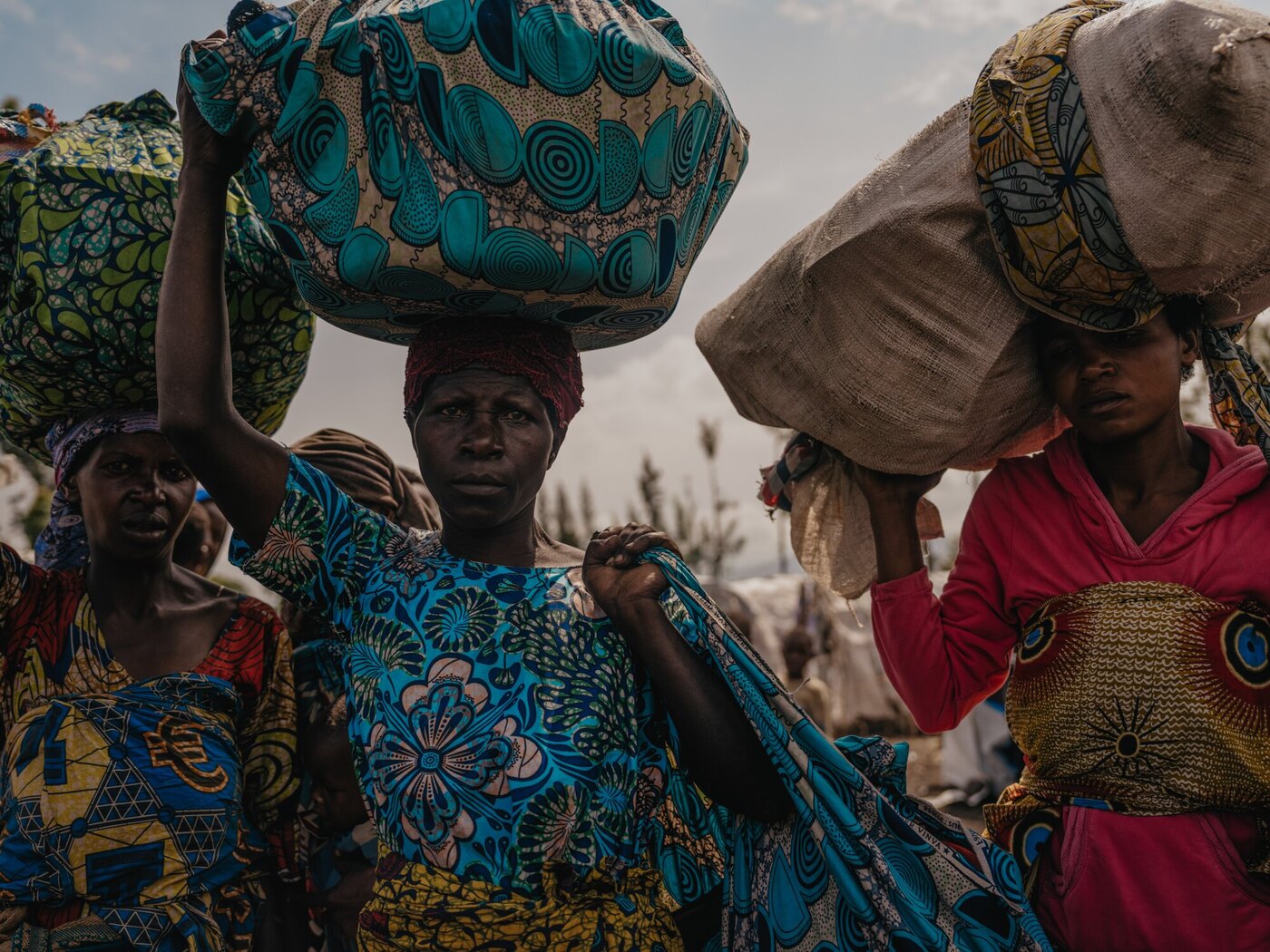
Examples in Congo’s past suggest the government is running intense risks by giving guns to ad hoc forces like the Wazalendo. When Rwanda and Uganda attacked Congo in 1998 the Congolese armed militia to fight the invaders. A former president, Laurent-Désiré Kabila, urged the militia to “drive out the enemy,” but the armed groups, after fighting the Rwandans and Ugandans, began to fight among themselves and with the Congolese army, leading to much of the insecurity that exists today.
“So many weapons are being shipped to the east and there is no accountability, we don’t know exactly who is using them,” Mulala said. “I am really afraid that this will become some kind of generalization of violence, with no purpose and direction.”
In October 2023, these Wazalendo groups were used as the main thrust of an offensive against the M23. In the towns of Masisi territory, these militiamen lounged around between battles, many children carrying rifles and belts of ammunition. In Nturo, a Tutsi majority village on the road to Masisi, homes had been razed to the ground by marauding Wazalendo, who soon retreated once M23 counterattacked.
For Marciane and families across North Kivu, history is repeating itself. This is only the latest in a series of displacements. Families have had to run to safety again and again in their lifetimes. Each generation has stories of leading their children by the hand, fleeing down the same roads, away from the same front lines.
Thriving violence, confused narrative
Social media has complicated our understanding of the reasons Congolese like Marciane have to flee. A hashtag on TikTok, #silentholocaust, blames “Western Imperialism” for funding Rwanda and Uganda’s armies in order to steal Congo’s considerable natural resources. (The United States actually took the unusual step of critiquing Rwanda’s support for rebel groups this summer after an UN report revealed “direct interventions by the Rwanda Defence Force” on Congolese territory.) TikTokers have also blamed Israel for “being at the heart of the genocide in the DRC,” accusing the country of supporting the M23, even though Israeli trainers had actually been supporting the Congolese army.
What’s even more worrying is that this confused narrative is being reiterated in news outlets. The Republic, a Nigerian newspaper, suggested that Rwanda was invading Congo to steal cobalt—a mineral that is used in battery cathodes—at the behest of the UK. The fact that no cobalt mines exist in the areas attacked by the M23 seems to have escaped the writer.
Part of this confused narrative stems from the fact that the causes of the seemingly-forever war in Congo are complex and shifting. The conflicts are highly local within Congo, but they can sometimes become embroiled in regional or even transnational intrigue. They begin with, depending on whom you ask, the ethnic hatreds unleashed during the two Congo Wars of the late 1990s and early 2000s; the 1994 Rwandan Genocide; Belgian colonial policies of the late 19th and 20th centuries; or even older ethnic hatreds, for example between the country’s BaTwa Pygmies and Bantu populations.
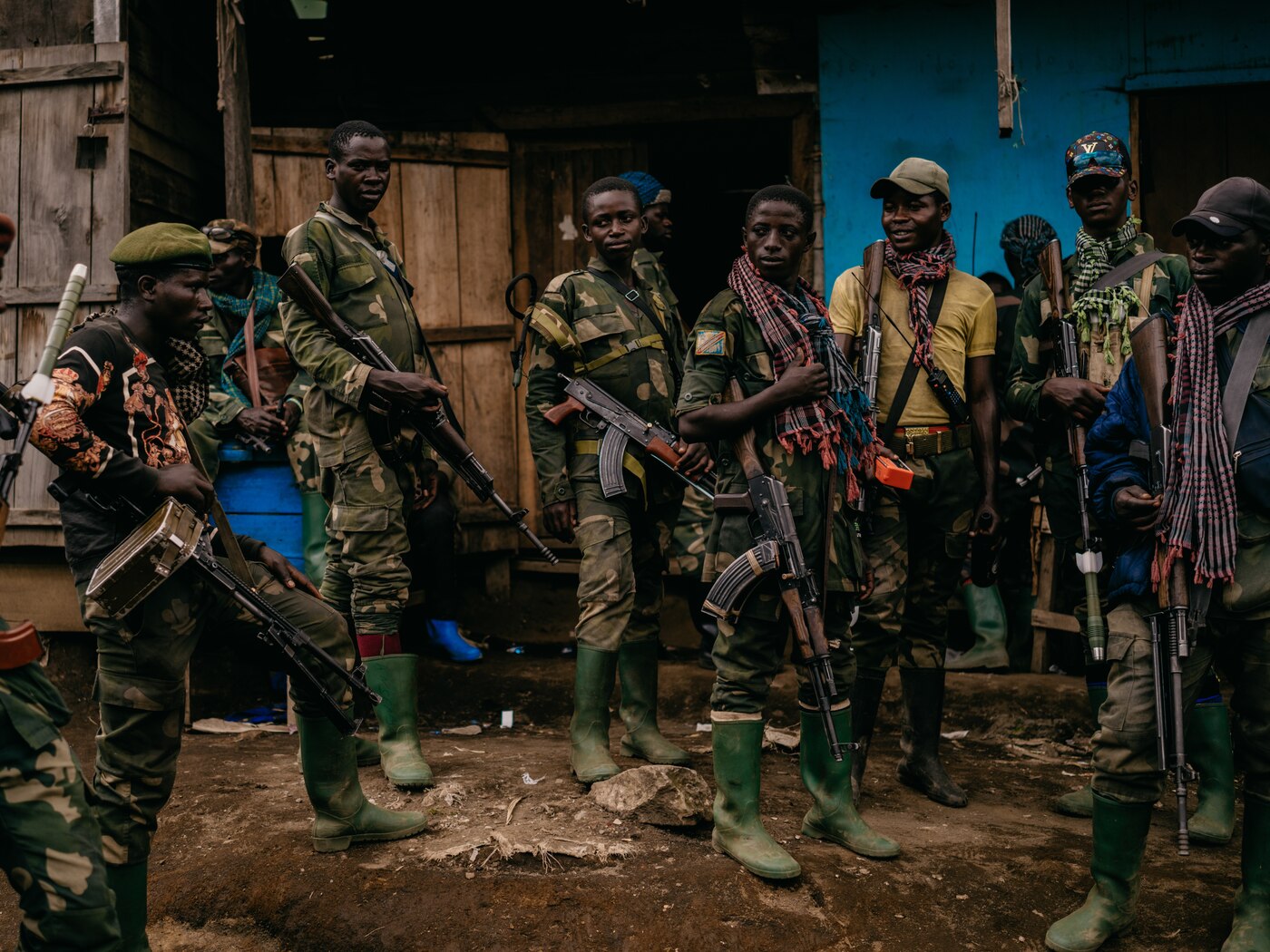
The violence has worsened under the rule of President Tshisekedi. There are multiple, overlapping conflicts besides the M23 rebellion that are causing wanton death and destruction. In the northern state of Ituri, the simmering conflict between the Hema and the Lendu people has exploded into mass killing while the local UN force seems to be powerless to intervene. In Beni territory, a decades-old insurgency by Ugandan rebels has hardened into a brutal ISIS offshoot. In the center of the country, the Yaka and Teke peoples fought each other over land rights earlier this year, a conflict that the Catholic Church said was backed by powerful political figures in Kinshasa. And across the country, Congolese wonder whether Tshisekedi will leave office quietly if he is not voted in today—as a report by Human Rights Watch put it, the threat of election-related violence threatens to undermine the democratic process.
What is clear is that the confusion of outsiders and lack of clarity at all levels of the Congolese political process complicate efforts to solve the endless string of crises in the DRC. Those who suffer, like Marciane, are caught in cycles of conflict from which they cannot escape, and only the corrupt and the violent prosper.
In Sake, Marciane and the other refugees set to work. Despite a long walk to safety, and the sound of weapons behind them, there was no respite. Evening was approaching and they needed wood to build a shelter.
Tens of thousands pass each night like this in Congo, under plastic tarpaulins resting on a frame of tree branches, held together by delicate strips of torn mosquito netting. As the fighting continues, they will have to move again. They wonder when, if ever, they will be able to return home. When, if ever, the violence will stop.
Hold the powerful to account by supporting The Nation
The chaos and cruelty of the Trump administration reaches new lows each week.
Trump’s catastrophic “Liberation Day” has wreaked havoc on the world economy and set up yet another constitutional crisis at home. Plainclothes officers continue to abduct university students off the streets. So-called “enemy aliens” are flown abroad to a mega prison against the orders of the courts. And Signalgate promises to be the first of many incompetence scandals that expose the brutal violence at the core of the American empire.
At a time when elite universities, powerful law firms, and influential media outlets are capitulating to Trump’s intimidation, The Nation is more determined than ever before to hold the powerful to account.
In just the last month, we’ve published reporting on how Trump outsources his mass deportation agenda to other countries, exposed the administration’s appeal to obscure laws to carry out its repressive agenda, and amplified the voices of brave student activists targeted by universities.
We also continue to tell the stories of those who fight back against Trump and Musk, whether on the streets in growing protest movements, in town halls across the country, or in critical state elections—like Wisconsin’s recent state Supreme Court race—that provide a model for resisting Trumpism and prove that Musk can’t buy our democracy.
This is the journalism that matters in 2025. But we can’t do this without you. As a reader-supported publication, we rely on the support of generous donors. Please, help make our essential independent journalism possible with a donation today.
In solidarity,
The Editors
The Nation

